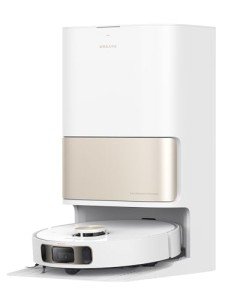Robotic Vacuum Cleaner Comparison: The Future of Home Cleaning
In recent years, robotic vacuum cleaners have changed the method we keep cleanliness in our homes. With developments in technology and the incorporation of expert system, these devices have progressed from mere novelty products to essential household appliances. This post offers a thorough comparison of some of the leading robotic vacuum on the market, helping consumers make notified choices when picking a design that suits their requirements.
Comprehending Robotic Vacuum Cleaners
Robotic vacuum are autonomous machines designed to clean floors automatically. Equipped with sensing units, they browse around challenges and adjust their cleaning routes for optimal effectiveness. The crucial features that distinguish various models include suction power, battery life, app connectivity, navigation innovation, and price.
Secret Features to Consider
When comparing robotic vacuum, potential purchasers must take into account the following factors:
- Suction Power: Measured in Pascals (Pa), suction power figures out the effectiveness of getting dirt and particles.
- Battery Life: The length of time a vacuum can operate before requiring a recharge substantially impacts its cleaning performance.
- Navigation Technology: Models might utilize simple random navigation or advanced mapping technologies (like LIDAR) that permit them to create a map of the home.
- Smart Features: Connectivity to smartphone apps or smart home systems can enhance functionality and control.
- Filter Type: HEPA filters are suggested for allergic reaction sufferers, as they trap allergens and enhance air quality.
Comparison of Top Robotic Vacuum Cleaners
Below is a comparison table of a few of the best robotic vacuum readily available in 2023:
| Model | Suction Power (Pa) | Battery Life (min) | Navigation Technology | Smart Features | Price (GBP) |
|---|---|---|---|---|---|
| iRobot Roomba i7+ | 1700 | 75 | Smart mapping | App control, voice command | ₤ 949 |
| Roborock S7 | 2500 | 180 | LIDAR | App control, multi-floor | ₤ 649 |
| Neato D7 | 2000 | 120 | LIDAR | App control, zone cleaning | ₤ 599 |
| Ecovacs Deebot T10 | 3000 | 150 | Smart mapping | App control, space detection | ₤ 799 |
| Shark IQ Robot | 1200 | 90 | Random | App control, self-emptying | ₤ 399 |
Explanation of the Table
- iRobot Roomba i7+: Known for its robust cleaning ability, it features smart mapping innovation that enables it to designate particular locations for cleaning. Its self-emptying feature is a plus for benefit.
- Roborock S7: This design stands out in suction power and battery life, making it ideal for bigger homes. Its LIDAR technology assists create an efficient cleaning course, and it can vacuum and mop simultaneously.
- Neato D7: The D-shape design enables much better corner cleaning, and it includes strong suction power. Its LIDAR navigation enables it to map out cleaning areas precisely.
- Ecovacs Deebot T10: Boasting the highest suction power and advanced navigation, this model can handle numerous floorings efficiently. It's a versatile option for families with differing floor types.
- Shark IQ Robot: A budget-friendly choice that still uses smart features. Its self-emptying capability and app combination make it a useful choice for those looking for a strong cleaning buddy without breaking the bank.
Advantages of Robotic Vacuum Cleaners
Robotic vacuum use various benefits that add to their rising popularity amongst consumers:
- Time-Saving: Automated cleaning enables users to maximize valuable time that can be invested in other activities.
- Convenience: Many designs can be set up by means of apps to clean at particular times, reducing manual effort.
- Availability: They can reach under furniture and in tight areas where conventional vacuums might have a hard time.
- Daily Maintenance: Regular use of robotic vacuums can help maintain a regularly tidy environment, promoting much better general home hygiene.
Frequently Asked Questions About Robotic Vacuum Cleaners
1. How frequently should cleaning robots run my robotic vacuum?
It is suggested to run the robotic vacuum a minimum of 2-3 times a week to preserve tidiness, though daily usage can be beneficial, especially in homes with family pets or high foot traffic.
2. Do robotic vacuums deal with carpets?
Yes, numerous robotic vacuums are created to work on carpets, however efficiency might differ based upon the model's suction power and brush type. Look for designs specifically discussed as reliable for carpets.
3. Can robotic vacuums tidy family pet hair?
Most robotic vacuums can effectively get pet hair, however those with strong suction and tangle-free brush designs are especially well-suited for this task.
4. How do I maintain my robotic vacuum?
Routine upkeep consists of cleaning the brushes and sensing units, emptying the dustbin, and sometimes changing filters to make sure ideal efficiency.
5. Are cheap robot vacuum cleaner ?
While they tend to be more expensive than traditional vacuums, the convenience, performance, and time-saving elements make them a deserving financial investment for many homes.
The market for robotic vacuum cleaners continues to broaden as technology evolves, using consumers a range of choices to fit various cleaning needs and budgets. By thoroughly considering features such as suction power, battery life, and smart abilities, users can pick a design that aligns with their lifestyle. Whether for benefit, ease of usage, or superior cleaning performance, robotic vacuums are certainly reshaping the future of home cleaning.

